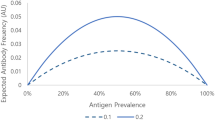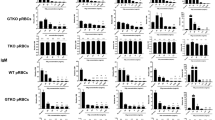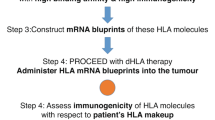Abstract
LEUCOCYTE isoantibodies, which appear after skin homo-transplantation in rabbits and rats, cannot usually be detected by simple agglutination. This report describes a method for demonstrating these isoantibodies, which is based on the synergistic action of two antibody systems1,2, and which is also suitable for leucocyte typing. In this method donor leucocytes are agglutinated by the joint action of two different antibodies, each used in a subagglutinating titre.
This is a preview of subscription content, access via your institution
Access options
Subscribe to this journal
Receive 51 print issues and online access
$199.00 per year
only $3.90 per issue
Buy this article
- Purchase on Springer Link
- Instant access to full article PDF
Prices may be subject to local taxes which are calculated during checkout
Similar content being viewed by others
References
Nelken, D., Rachmilewitz, B., and Gabriel, M., Vox Sang., 11, 470 (1966).
Nelken, D. Histocompatibility testing 1965, Series Haematologica 11, Munksgaard, Copenhagen.
Warwick, W. J., Transplant. Bull., 30, 163 (1962).
Nelken, D., Gilboa-Garber, N., and Gurevitch, J., J. Clin. Pathol., 13, 266 (1960).
Author information
Authors and Affiliations
Rights and permissions
About this article
Cite this article
GABRIEL, M., HANNA, N. & NELKEN, D. Synergistic Action of Antibodies: Detection of Circulating Antileucocyte Antibodies after Skin Transplantation. Nature 213, 499–500 (1967). https://doi.org/10.1038/213499a0
Issue Date:
DOI: https://doi.org/10.1038/213499a0
Comments
By submitting a comment you agree to abide by our Terms and Community Guidelines. If you find something abusive or that does not comply with our terms or guidelines please flag it as inappropriate.



